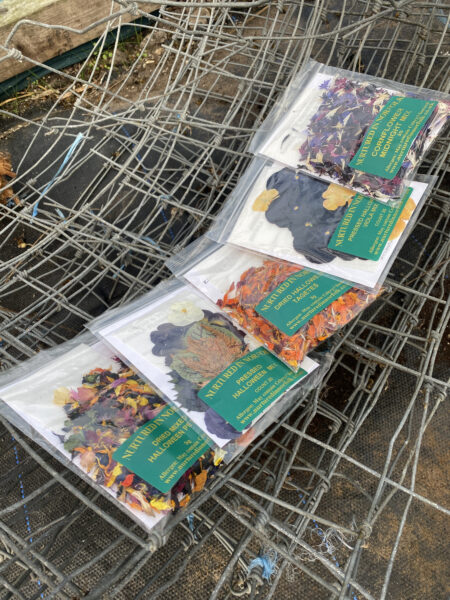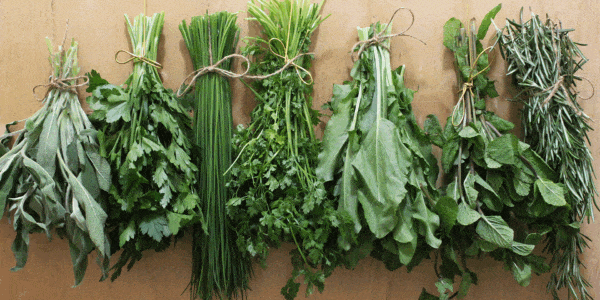 20 October 2022 | Horticulture Hacks
20 October 2022 | Horticulture Hacks
Lemon sorrel is a great addition to your herb garden

Nurtured in Norfolk’s gardening expert Martyn Davey answers all your questions.
If you would like any horticulture query answered please do e-mail our head grower at martyn@nurturedinnorfolk.co.uk to add your thoughts to our weekly horticulture hacks.
Dear Martyn,
Could you please help I have just been planting out some lemon sorrel which I have grown from seed sown in the spring. I have grown the plants in my greenhouse, which has got quite hot but the plants have grown well. The seeds came from a quality brand and germinated well I potted them up into a multipurpose compost in small pots and have now started planting them out in the garden and have noticed that they strange white and blue or possibly grey eggs on the backs of some of the leaves. I have never seen this before could you tell me what they are and is it safe to still plant my herbs?
N. King, North Walsham
Dear Reader,
Thank you for the sample as this made it possible to tell that the eggs are from one of the two species of green shield bug that occur in Britain. The common green shield bug is native to Britain, and of widespread occurrence. The southern green shield bug is an arrival from elsewhere in Europe that became established in the in south east England in 2003.
Shield bugs or to give them their scientific names Palomena prasina and Nezara viridula affect various plants the common green shield bug can been seen on many different plants whereas the Southern green shield bug is most commonly seen on runner beans, tomato and raspberry; also on the seed heads of ornamental plants. These bugs are sap-sucking insects that can be found on a wide range of plants. The adults, when viewed from above, have a distinctive shield-like shape. There are more than 30 species of shield bug in Britain, most are brown in colour, whilst these two species are green in the adult stage.
The common green shield bug does not cause any damage to the plant. The southern green shield bug may cause distorted bean pods and damaged fruits. They are most active from April to October. They are also active in summer when they lay small clusters of eggs on the undersides of leaves.
The name shield bug is due to the shield-like shape of the adult insects when seen from above. When fully grown the common green shield bug (Palomena prasina) is a broad, flattened, green insect with a strongly contrasting blackish brown darker area at the rear end, where the hind wings cross. The adult insects are about 10mm long and are often seen basking in the sun in late summer on a wide variety of plants. Nymphs of the native green shield bug have a rounded shape and are pale green, with some black markings during the earlier instars.
In 2003, another species of shield bug, the southern green shield bug (Nezara viridula) was found breeding for the first time in the London area. This arrival from elsewhere in Europe is up to 12 mm long, making it slightly larger than the native green shield bug. The adults are uniformly green and lack a dark area at the rear end of the body, immature southern green shield bugs are green or black with many white, yellow or pinkish-red circular markings on their upper surface. This species can cause damage to some vegetables, especially runner and French bean pods, but it remains to be seen whether it will become established to the extent that it becomes a pest.
Whilst this bug can be a problem in other parts of the world, the evidence so far in mainland Britain is that the southern green shield bug does not become numerous until late summer or early autumn, by which time beans are coming to the end of their cropping period and so little damage is caused.
The native common green shield bug is harmless and control measures are not required.
The southern green shield bug has not yet become numerous enough to cause damage to crop plants. Large numbers have only been seen from August onwards when crop damage is likely to be insignificant and therefore control is unlikely to be necessary
There are about 30 other species of shield bugs, which are brown or yellowish green with reddish markings. Some of these can also be found in gardens, none of these will damage garden plants.
Jobs for this week in the garden.
Collect seed from garden plants now and store in the cool, make sure you label it.
Harvest sweetcorn and other vegetables as they become ready this is peak harvest time.
Continue cutting out old fruited canes on summer fruiting raspberries.
Martyn Davey – Head Grower

